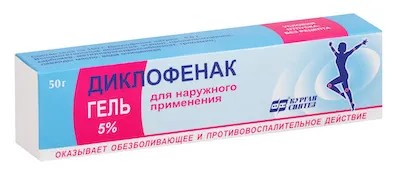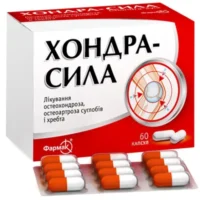Description
Diclofenak (Diclofenac) Gel 5% 50 g. Tube
Ingredients
Diclofenac Sodium 5% is the active ingredient in Diclofenak gel. Other inactive ingredients include carbomer, cocoyl caprylocaprate, diethylamine, isopropyl alcohol, liquid paraffin, and perfume.
Mechanism of Action
Diclofenak gel works by inhibiting the enzyme cyclooxygenase, thereby reducing the production of prostaglandins that cause pain and inflammation. This localized action helps to alleviate pain without affecting the entire body system.
Pharmacological Properties
Diclofenak gel exerts its pharmacological effects by blocking the inflammatory process at the site of application. The active ingredient, diclofenac sodium, penetrates the skin and acts locally to reduce pain and swelling.
Indications for Use
Diclofenak gel is indicated for the relief of pain and inflammation associated with musculoskeletal conditions such as arthritis, sprains, strains, and backache.
Contraindications
Do not use Diclofenak gel if you are allergic to diclofenac or other NSAIDs, have a history of asthma attacks, hives, or other allergic reactions after taking aspirin or other NSAIDs.
Side Effects
Common side effects of Diclofenak gel may include skin irritation, redness, or rash at the application site. In rare cases, systemic side effects such as gastrointestinal disturbances or allergic reactions may occur.
Usage Instructions
Apply a thin layer of Diclofenak gel to the affected area 3 to 4 times daily. Gently massage the gel into the skin. Wash hands after application. Clean and dry the affected area before applying the gel. Avoid contact with eyes, mucous membranes, or open wounds. Do not bandage or wrap the treated area.
Benefits Compared to Analogues
Studies have shown that topical diclofenac formulations like Diclofenak gel can provide effective pain relief with lower systemic exposure compared to oral NSAIDs. The gel formulation allows for targeted delivery to the site of pain, reducing the risk of systemic side effects.
Suitable Patient Groups
Diclofenak gel is suitable for adults, including the elderly, and adolescents over the age of 14 years. It is not recommended for use in children under 14 years of age.
Storage and Shelf Life
Store Diclofenak gel at room temperature, away from moisture and heat. Keep the tube tightly closed when not in use. Check the expiration date on the packaging and do not use the gel after the specified date.
Packaging Description
Diclofenak gel is supplied in a 50 g tube for topical application. The packaging should include information on the active and inactive ingredients, dosage instructions, contraindications, and storage conditions.
Clinical Evidence and Proven Effectiveness
Comparative studies have shown that topical diclofenac formulations are as effective as oral NSAIDs in managing pain and inflammation in conditions like osteoarthritis and soft tissue injuries. The advantage of topical gels is their targeted action with minimal systemic absorption, reducing the risk of gastrointestinal side effects.





